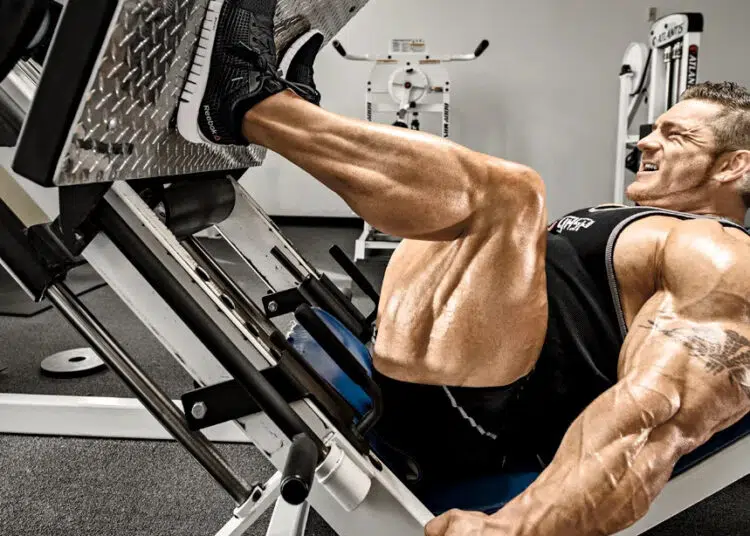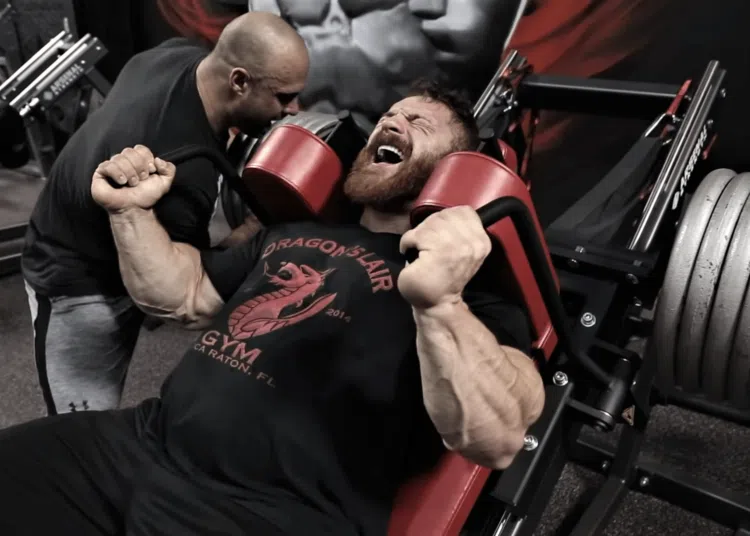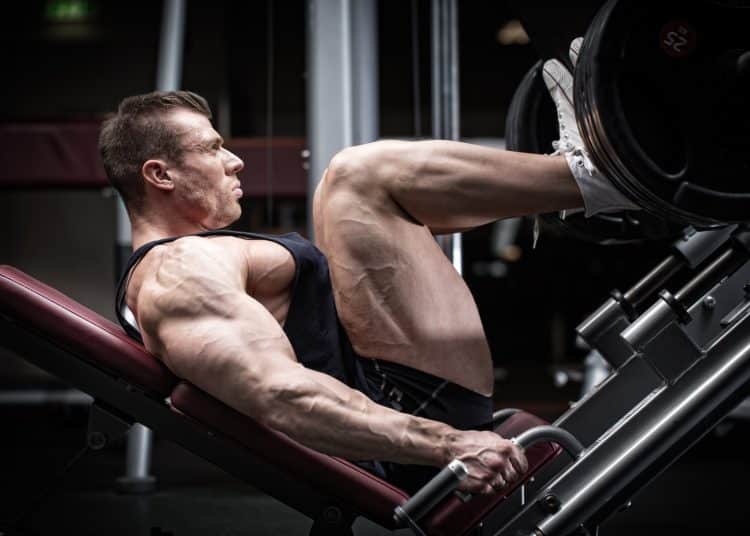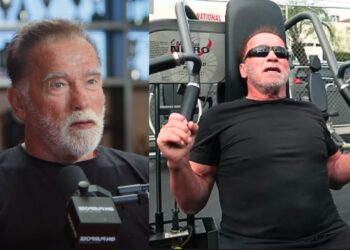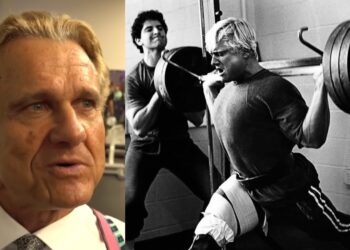Most of us have a lagging muscle group. For me, it was unfortunately my legs. I knew I had to do something out of the box to break through the overhead ceiling and achieve my maximum hypertrophy potential.
I drew inspiration from Flex Lewis, the seven-time 212 Olympia champion. “The Welsh Dragon” has legs the size of tree trunks and his reputation preceeds him when it comes to lower body development.
Since I was in a hurry, I decided to turn things up a notch. I decided to follow Lewis-inspired workouts twice a week for three weeks. In this article, I take you over my experience with this challenge and how it impacted my leg size, strength, and endurance. I’ll also share tips on how you can adopt this routine according to your unique needs.
Understanding Flex Lewis’ Leg Day

Lewis does not play games when it comes to training legs. During his competitive days, his legs made him stand out amongst his peers, and many bodybuilding pundits believe that his wheels fueled his dominance.
Since I would be training my legs six times over these three weeks, I chose to switch between two different workouts to avoid monotony and keep the sessions fun and interesting,
After watching countless leg training videos and listening to several of his podcasts, I designed the following routine to build legs like the champ.
Level Up Your Fitness: Join our 💪 strong community in Fitness Volt Newsletter. Get daily inspiration, expert-backed workouts, nutrition tips, the latest in strength sports, and the support you need to reach your goals. Subscribe for free!
Workout 1
These high-volume leg workouts train your muscles from different angles to ensure overall development. You’ll perform a total of 28 sets in the first workout to fill your lower body muscles with blood, oxygen, lactic acid, and nutrients, maximizing hypertrophy.
Both these Lewis-inspired workouts involve a balance of compound and isolation movements to ensure optimal muscle fiber activation and subsequent adaptations.
Coach Tip: Although this is a high-volume, high-intensity workout, avoid the urge to rush through the exercises as it can increase the risk of injury and limit muscle activation.
| Exercise | Sets | Reps | Rest (seconds) |
| Barbell Squats | 4 | 8-12 | 90-120 |
| Leg Press | 4 | 12-15 | 90 |
| Walking Lunges | 3 | 10-12 (each leg) | 60-90 |
| Hack Squats | 3 | 12-15 | 75 |
| Leg Extensions | 3 | 15-20 | 60 |
| Lying Leg Curls | 3 | 15-20 | 60 |
| Seated Calf Raises | 4 | 15-20 | 45 |
| Standing Calf Raises | 4 | 15-20 | 45 |
Workout 2
I did the first session on a Monday and the other on a Thursday to give my body enough time to recover. The second workout involves slightly lower training volume to give your muscles a little breathing room.
I alternated between these workouts throughout the three weeks to get the best bang for my training buck.
| Exercise | Sets | Reps | Rest (seconds) |
| Barbell Squats | 4 | 6-10 | 120 |
| Leg Press | 4 | 10-12 | 90 |
| Reverse Lunges | 3 | 12 per leg | 60 |
| Hack Squats | 3 | 12-15 | 60 |
| Seated Hamstring Curls | 3 | 12-15 | 45 |
| Seated Calf Raises | 4 | 12-15 | 30 |
The high rep ranges demand strength and muscle endurance, and the short rest periods helped me maintain a high intensity while allowing just enough time for recovery.
Using the proper technique can make or break your workouts, especially when you are training your legs. Experts recommend aiming for full knee flexion, which involves touching your hamstrings to the calves during exercises like squats, to maximize target muscle stimulation. (1)
Half-assing the reps will make you leave gains on the table. There is no harm in taking longer rest breaks if your body needs more time to recover. The most important thing here is that you are able to give your best in each set.
This routine targets the quads, hamstrings, glutes, and calves. Barbell back squats and leg presses stimulate overall leg development while exercises like lunges and hacks squats add depth and definition.
I also added calf raises to the mix to ensure I wasn’t leaving any loopholes.
The heavier exercises trigger a cascade of hormonal responses, promoting muscle protein synthesis. On the other hand, isolation movements deliver a solid pump by enhancing blood flow and nutrient delivery to the target muscles.
Consider these workouts a blueprint and feel free to switch the exercises based on your current fitness level and training objectives. However, if you’re trying to build legs like Lewis, you must make barbell squats, leg presses, and lunges a staple in your workouts.
Week 1: Embracing the Pain
Although I have been training for almost two decades, I don’t remember the last time I performed close to 30 sets in a single leg workout. This made me feel a little anxious before I started my first workout of this three-week challenge. I knew pain was waiting for me on the other side of this workout.
Drawing inspiration from Lewis, I prioritized performing each rep with a perfect form. I also employed controlled and slow eccentrics to increase the time under tension (TUT) and maximize the rate of muscle growth. (2)
I trained close to my 12 rep max on the squats and leg presses to ensure I was not training in my comfort zone. While I was expecting squats to be challenging, I had not expected lunches would be so brutal. Each subsequent set felt like I had a mountain to climb in front of me.
My legs were so sore after the very first workout that walking out of the gym and climbing the stairs to my apartment was a battle in itself.
Day Two
Just when the soreness had begun to subside, it was time for the second workout. Performing another high-volume leg workout three days later demanded serious willpower.
Since I only had six workouts to make it count, I employed progressive overload to maximize my results. This training technique involves gradually increasing the weight, reps, or sets over time to subject the body to increased stress for continued progress.
I tried increasing the weight on each exercise by at least 2.5 pounds while focusing on proper form, a full range of motion, and muscle contractions at the peak with each rep.
I kid you not, I felt a heartbeat in my quads and calves at the end of this workout.
Active recovery techniques like foam rolling, light stretching, and ice packs helped ease the soreness, and I increased my water and protein intake to promote recovery. I used this total daily energy expenditure (TDEE) calculator to determine my ideal calorie and macronutrient intake to maximize my lower body muscle gains.
Level Up Your Fitness: Join our 💪 strong community in Fitness Volt Newsletter. Get daily inspiration, expert-backed workouts, nutrition tips, the latest in strength sports, and the support you need to reach your goals. Subscribe for free!
Week 2: Adapting and Progressing
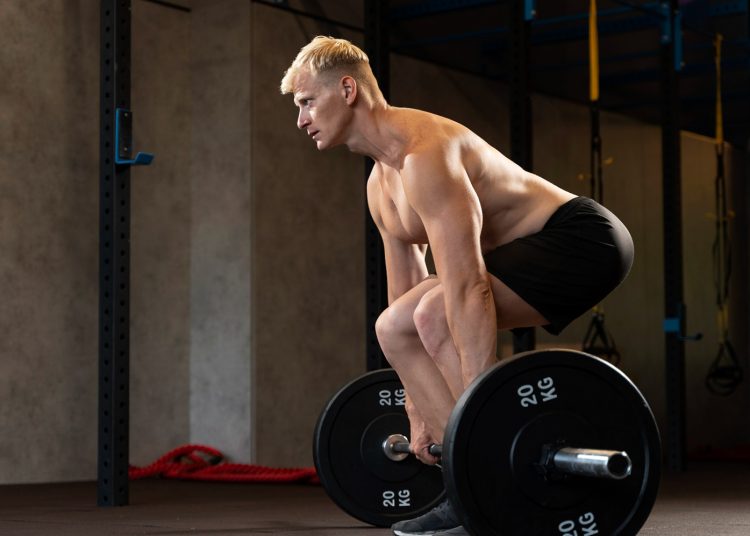
I noticed an uptick in my ability to handle heavier weights in the first workout of this week. My endurance improved and I could complete the recommended sets without feeling totally winded. Although my legs did not transform overnight, I felt stronger and more resilient.
In some exercises like leg presses, I bumped up the weight by 10 pounds to shock my muscles into growing. On the other hand, in exercises where I could not increase the weight significantly, I tried to do more reps.
Remember, this training program is inspired by a bodybuilding legend whose training philosophy centers around pushing boundaries. Before every workout, I had to remind myself that I needed to train with maximum intensity and stay consistent to maximize the results.
Surprisingly, I felt mentally prepared for each workout and the soreness wasn’t such a big issue now.
My rest time between sets and workouts reduced significantly, which I attribute to improved blood flow and better delivery of nutrients to the target muscles.
As my muscles started adapting to the high-volume training approach, I paid more attention to developing a deep mind-muscle connection to ensure optimal muscle fiber recruitment.
Second Week Improvements
Week Two brought tangible progress as my strength increased across the board. I also witnessed an improvement in my work capacity, resulting in better performance in day-to-day activities and sports.
Plus, I was stoked that I did not hit a plateau as it can take a long time to break through one.
Coach Tip: I highly recommend starting your workout with compound movements like squats and leg presses and then transitioning to isolation exercises like leg extension when the fatigue starts to creep in. This ensures you have enough energy to perform higher-stake multi-joint exercises correctly.
Week 3: Pushing the Limits
The final week of every training challenge brings the best out of me. I was super pumped to finish this week strong. After all, I had to make Lewis proud.
I added weight to each exercise and pushed myself to the brink in each set. I hit a new person record (PR) on the leg press, adding another 15 pounds to the lift. Furthermore, my form improved in each lift and I felt more comfortable lifting heavy and achieving depth.
Make sure you are training with a spotter while chasing PRs to limit the risk of injury. Going too heavy on exercises like squats can go horribly wrong if you don’t have safety precautions in place.
Final Workout
While the first workout was a blockbuster, I felt fatigued and drained for the final session of this challenge. Nonetheless, I went ahead with the workout. I employed slow eccentrics during seated hamstring curls, overloading the muscles without the risk of overtraining.
Completing this Flex Lewis leg challenge boosted my self-confidence and I’m now more comfortable starting new more challenging workout programs.
Measuring the Results of this 6-Week Flex Lewis Challenge
Let’s now talk about the results because this is why we put ourselves through so much pain.
Although three weeks is a relatively short time, my legs felt stronger and more defined. Here are the details:
| Exercise | Week 1 Max Weight | Week 3 Max Weight | Increase |
| Leg Press | 315 lbs | 360 lbs | 45 lbs |
| Squats | 225 lbs | 250 lbs | 25 lbs |
| Lunges | 185 lbs | 205 lbs | 20 lbs |
The improvements weren’t limited to these three exercises. My hamstrings are my weakest muscle group and I can now do 12 instead of 10 reps with 185 pounds. I also added 10 pounds to my leg extensions and 20 pounds to my standing calf raise 15-rep max.
Physique Aesthetics and Endurance Gains
When you are following a bodybuilder’s training routine, it’s obvious to expect muscle size, definition, and separation improvements.
I gained approximately 1 inch in my upper legs. Although this isn’t a big jump, it is respectable considering I achieved this in just 21 days. Furthermore, my quad and hamstring separation and definition improved considerably. I could now see lines that didn’t exist earlier.
Stronger legs can improve your overall performance, and this is exactly what happened to me. I now feel less winded after doing strenuous physical activities.
Plus, since the legs are the foundation of our body, this three-week training program improved my balance, stability, and core strength.
This is also when I realized all my hard work had finally paid off.
I won’t lie; this Flex Lewis-inspired three-week leg training routine was a nightmare. Even though I’m a seasoned lifter, it challenged me to my core. The volume and intensity are very high and demand physical and mental fortitude.
I would go as far as to say that this training routine should be reserved for advanced athletes with a solid foundation in weight training.
Conclusion
Following this Flex Lewis-inspired three-week challenge boosted my overall lower body strength, adding up to 45 pounds to my leg press. My lower body muscle definition, stability, and core strength also improved considerably.
Start small but stay consistent while following this training program to get the best results. Beginners can perform one leg workout each week and increase the training frequency as they gain more experience. Advanced athletes, on the other hand, can go full-throttle from the first session itself. Scale this three-week challenge according to your unique needs and there will be no stopping you.
If you have any questions about Flex Lewis’ leg training routine or need help implementing it into your own workouts, post them in the comments and I’ll be happy to help!
References:
- Krishnan C, Allen EJ, Williams GN. Effect of knee position on quadriceps muscle force steadiness and activation strategies. Muscle Nerve. 2011 Apr;43(4):563-73. doi: 10.1002/mus.21981. PMID: 21404288; PMCID: PMC3077092.
- Burd NA, Andrews RJ, West DW, Little JP, Cochran AJ, Hector AJ, Cashaback JG, Gibala MJ, Potvin JR, Baker SK, Phillips SM. Muscle time under tension during resistance exercise stimulates differential muscle protein sub-fractional synthetic responses in men. J Physiol. 2012 Jan 15;590(2):351-62. doi: 10.1113/jphysiol.2011.221200. Epub 2011 Nov 21. PMID: 22106173; PMCID: PMC3285070.

